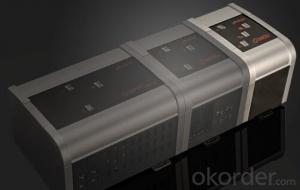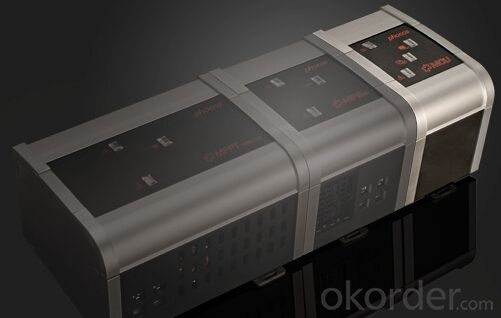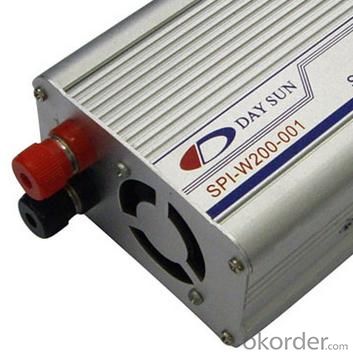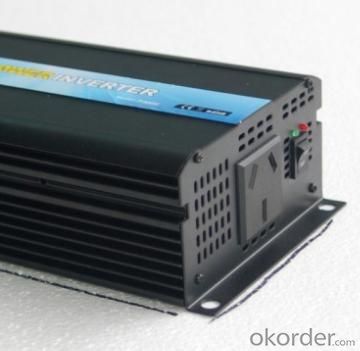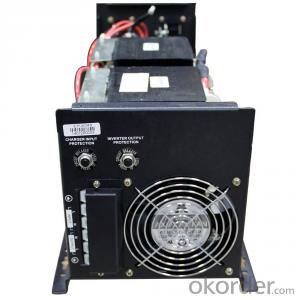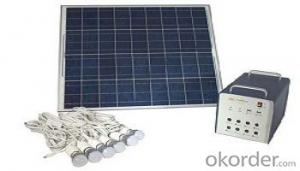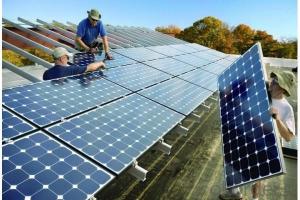Ses Solar Energy Systems Tunisie Solar MCU 2.0 Modular Central Unit with High Quality
- Loading Port:
- China Main Port
- Payment Terms:
- TT or LC
- Min Order Qty:
- -
- Supply Capability:
- 10000 unit/month
OKorder Service Pledge
OKorder Financial Service
You Might Also Like
1, Product desciption
Inverter circuits designed to produce a variable output voltage range are often used within motor speed controllers.
The DC power for the inverter section can be derived from a normal AC wall outlet or some other source. Control and feedback circuitry is used to adjust the final output of the inverter section which will ultimately determine the speed of the motor operating under its mechanical load.
Motor speed control needs are numerous and include things like: industrial motor driven equipment, electric vehicles, rail transport systems, and power tools. (See related: variable-frequency drive ) Switching states are developed for positive, negative and zero voltages as per the patterns given in the switching Table.
The generated gate pulses are given to each switch in accordance with the developed pattern and thus the output is obtained.
2, Features of the product
To do this, AC power is first rectified to provide DC power. The inverter then changes the DC power to high frequency AC power. Due to the reduction in the number of DC Sources employed, the structure becomes more reliable and the output voltage has higher resolution due to an increase in the number of steps so that the reference sinusoidal voltage can be better achieved.
This configuration has recently become very popular in AC power supply and adjustable speed drive applications. This new inverter can avoid extra clamping diodes or voltage balancing capacitors. There are three kinds of level shifted modulation techniques, namely:
· Built-in 1 year data logger for system analysis
· Charge and discharge status display
· Acoustic load disconnect pre-warning
· Load status indication
· Choose between 5 load disconnect algorithms
· Boost/absorption/float PWM-regulation (series type)
· Integrated temperature compensation
· Covered terminals (up to 16 mm2 wire size)
· Full solid-state protection
The first thing to figure out is the length of road in need of street lights.
This can be a small entrance road only a couple hundred of feet long to miles of streets through an area. Does the area currently have any type of lighting available.
What is the reason for needing street lights in this area
Is the electrical grid already nearby or would you need to call in the power company to bring in electrical lines.
If the electric needs to be brought to the area, how much is this going to cost? Depending on how far the grid electric is from the location of the needed lighting, this can be quite expensive.
How much lighting is needed on the street? Do the lights need to be dark sky compliant.
Do the street lights need to run from dusk to dawn or for only a specified number of hours at night.
Are the street lights able to dim in the middle of the night and still provide enough lighting.
These questions need to be answered before you can decide on how many lights you will need to complete the project.
3, Product Image
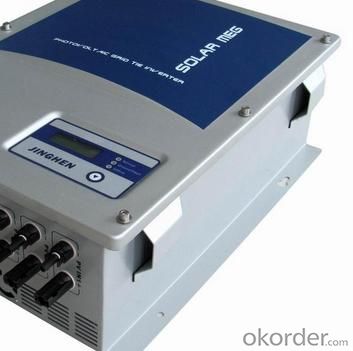
4, Detailed Specification
INPUT | |
Input voltage range | 185~265±5Vac |
OUTPUT | |
Output voltage range | 185~265±5Vac (AC mode) , 230Vac (DC mode) |
Output frequency (DC mode) | 50Hz (48~54Hz) or 60Hz(58~64Hz), same as AC(AC mode) 50Hz ±0.3Hz (DC mode) |
Wave form | Sine wave (DC Mode) |
Transfer time | 10ms. (Typical) |
BATTERY | |
Rated charging current (max.) | 45A |
Norminal DC input voltage | 12V |
Min. DC start voltage | 20V / 40V |
PHYSICAL | |
Unit dimension (mm) | 526*277*212 |
Master box dimension (mm) | 620*350*370 |
Net weight (1pc, kg) | 22.8 |
- Q: Can solar energy systems be used in countries with low sunlight availability?
- Yes, solar energy systems can still be used in countries with low sunlight availability. While it is true that solar energy systems rely on sunlight to generate electricity, advancements in technology have made it possible to capture and utilize even small amounts of sunlight efficiently. Additionally, solar energy systems can be designed to incorporate other renewable energy sources, such as wind or hydroelectric power, to supplement low sunlight availability. Furthermore, using energy storage systems, such as batteries, can help store excess energy during periods of low sunlight and release it when needed. Therefore, even in countries with low sunlight availability, solar energy systems can still be a viable and sustainable option for generating electricity.
- Q: How does the performance of solar panels vary based on the type of installation?
- The performance of solar panels can vary based on the type of installation due to factors such as the orientation and tilt of the panels, shading from nearby objects, and the quality of installation. A well-designed and properly installed solar panel system can maximize exposure to sunlight and optimize energy generation, resulting in higher performance. On the other hand, inadequate installation or poor positioning can reduce efficiency and lead to lower performance.
- Q: What is the role of solar energy systems in reducing energy inequality?
- Solar energy systems play a crucial role in reducing energy inequality by providing access to affordable and sustainable energy sources for communities that are traditionally underserved or lack reliable access to electricity. One of the main advantages of solar energy systems is their scalability, which makes them suitable for both large-scale installations and small-scale community-based projects. This flexibility allows solar energy systems to be deployed in rural areas, where the grid infrastructure may be nonexistent or unreliable. By harnessing the power of the sun, these systems can provide electricity to homes, schools, and healthcare facilities, improving the quality of life for people in these communities and bridging the energy gap. Furthermore, solar energy systems can be installed on rooftops, reducing the need for additional land and minimizing the environmental impact. This is particularly important in urban areas where space is limited and traditional energy sources, such as coal or gas, may be more polluting and harmful to human health. Solar energy systems can help reduce air pollution and associated health issues, creating a cleaner and healthier environment for all. Another key aspect of solar energy systems is their potential for decentralized energy production. Instead of relying solely on large power plants located far away from communities, solar energy systems allow for distributed generation, meaning electricity can be produced and consumed locally. This decentralization empowers communities to take control of their energy production, reducing their dependence on centralized grids and often volatile energy prices. Solar energy systems also have the potential to create economic opportunities and reduce energy costs for marginalized communities. By investing in solar installations, communities can generate income through the sale of excess energy back to the grid, creating local jobs and promoting economic development. Additionally, solar energy systems can help lower energy bills for households, freeing up financial resources that can be allocated to other essential needs. In summary, solar energy systems play a critical role in reducing energy inequality by providing equitable access to affordable, sustainable, and clean energy sources. By addressing energy poverty and promoting self-sufficiency, solar energy systems contribute to a more inclusive and sustainable future for all.
- Q: Can solar energy systems be used for powering off-grid agricultural processing facilities?
- Yes, solar energy systems can be used to power off-grid agricultural processing facilities. These systems can generate electricity through photovoltaic panels, which can be utilized to power various equipment and machinery required for processing agricultural products. Solar energy is a sustainable and renewable source, making it an ideal solution for off-grid facilities in remote agricultural areas. Additionally, solar energy systems can be combined with energy storage solutions to ensure a continuous and reliable power supply even during periods of low sunlight. Overall, solar energy systems offer a viable and environmentally-friendly option for powering off-grid agricultural processing facilities.
- Q: Can solar energy systems be used in areas with limited access to solar energy financing options?
- Yes, solar energy systems can be used in areas with limited access to solar energy financing options. In such cases, alternative financing models like community solar or power purchase agreements (PPAs) can be utilized. Additionally, organizations and governments can offer subsidies or incentives to make solar energy systems more affordable and accessible in these areas.
- Q: Can solar energy systems be used in conjunction with backup generators?
- Solar energy systems can indeed be used alongside backup generators, resulting in a more reliable and efficient power supply. These systems capture energy from the sun and convert it into electricity, enabling the powering of homes, businesses, and other facilities. However, solar panels only generate electricity when sunlight is available, making them inadequate during cloudy days, nighttime, or power outages. This is where backup generators come into play. They are devices that supply electricity when the primary power source is insufficient or inaccessible, such as during blackouts or when solar energy systems fail to generate enough power. By integrating backup generators with solar energy systems, a continuous and dependable power supply is ensured, regardless of weather conditions or grid disruptions. During times when solar panels generate surplus electricity, they can charge batteries that store this energy for later use. These batteries can then be utilized to power the premises during periods of low solar production or high energy demand, reducing the need for the backup generator. However, in situations where extended cloudy days or prolonged power outages occur, the backup generator can activate to supply the necessary energy, ensuring that lights stay on and essential appliances continue to function. The combination of solar energy systems and backup generators provides the advantages of renewable energy and energy independence while also serving as a backup power source when required. This integration is particularly beneficial in areas with unreliable grid infrastructure or regions prone to natural disasters. Moreover, it allows for better energy management, potentially leading to reduced electricity costs and decreased reliance on fossil fuels.
- Q: What is the role of power optimizers in solar energy systems?
- Power optimizers play a crucial role in solar energy systems by maximizing the efficiency and output of each individual solar panel. They help to mitigate the impact of shading, temperature variations, and panel mismatch, ensuring the system operates at its highest level of performance. Power optimizers also provide real-time monitoring and fault detection, enabling proactive maintenance and enhancing the overall reliability of the solar energy system.
- Q: Can solar energy systems be used in extreme weather conditions?
- Yes, solar energy systems can be used in extreme weather conditions. However, their efficiency may be affected to some extent depending on the severity of the weather.
- Q: Are solar energy systems noisy?
- No, solar energy systems are generally quiet as they do not involve moving parts or combustion processes.
- Q: How do solar energy systems impact the affordability of electricity?
- Solar energy systems have a significant effect on the affordability of electricity. One of the primary advantages of solar energy is its ability to provide a constant and renewable power source. By harnessing the energy from the sun, solar systems can generate electricity without relying on fossil fuels, which can be volatile in price and deplete over time. This stability in energy costs assists in lowering the overall price of electricity. Furthermore, solar energy systems aid homeowners and businesses in saving money on their utility bills. Once installed, solar panels produce electricity at no expense, reducing the need for grid power and decreasing monthly electricity expenses. In some cases, solar energy systems can even generate surplus electricity that can be sold back to the grid, further offsetting costs. Additionally, solar energy systems often come with financial incentives and tax credits from governments and utility companies. These incentives can help decrease the initial costs of installing solar panels, making them more affordable for individuals and businesses. As solar technology progresses and becomes more efficient, the cost of equipment and installation has been consistently decreasing, making solar energy systems even more accessible. In summary, solar energy systems have a positive impact on the affordability of electricity by providing a sustainable and cost-effective alternative to traditional power sources. By reducing dependence on fossil fuels, lowering energy bills, and offering financial incentives, solar energy systems play a crucial role in making electricity more affordable for both individuals and society as a whole.
Send your message to us
Ses Solar Energy Systems Tunisie Solar MCU 2.0 Modular Central Unit with High Quality
- Loading Port:
- China Main Port
- Payment Terms:
- TT or LC
- Min Order Qty:
- -
- Supply Capability:
- 10000 unit/month
OKorder Service Pledge
OKorder Financial Service
Similar products
Hot products
Hot Searches
Related keywords
